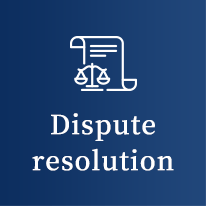Case in which we represented a minority shareholder in an action for rescission of a resolution of a shareholders’ meeting
Outline of the case
Small and medium-sized companies often do not hold shareholders’ meetings, but only prepare minutes of the shareholders’ meetings and register the appointment of directors. As a minority shareholder, we filed an action for revocation of the resolution of the shareholders’ meeting to the court to cancel the resolution of the shareholders’ meeting, and cancelled the registration of the appointment of directors by the court decision.
When the resolution of the shareholders’ meeting is defective
When disputes over control arise in family-owned companies, disputes often arise over the validity of the resolution of the general meeting. In most cases, the dispute is over the validity of the resolution to appoint directors, which means that the issue is whether the resolution to appoint the directors was valid or not. If the resolution of the shareholders’ meeting is defective, it is possible to confirm that the resolution of the meeting is not effective by filing an action for the non-existence of a shareholders’ meeting, an action for the invalidity of the resolution of the shareholders’ meeting, or an action for the revocation of the resolution of the shareholders’ meeting.
Action for rescission of shareholders’ meeting (Article 831, Paragraph 1 of the Companies Act)
An action to rescind a resolution of a general shareholders’ meeting is an action to rescind a resolution of a general shareholders’ meeting that has already been passed and to make it null and void (i.e., the resolution is deemed to have never been passed). Since a resolution can only be rescinded by a court decision, it is necessary to file a lawsuit with the court. An action for revocation of a resolution of a general shareholders meeting can be filed in the following cases:
(i) When the procedures for convening a shareholders’ meeting or the method of adopting resolutions are in violation of laws and regulations or the Articles of Incorporation, or are extremely unfair. When there is a defect in the procedure for convening a shareholders’ meeting or in the procedure for making resolutions. For example, the following cases are applicable.
-When the quorum for the resolution is not sufficient
-When the notice of convocation was not sent to some shareholders
-When the notice of convocation is not sent out within the specified period.
-When there is a deficiency in the content of the notice of convocation or the reference documents for the shareholders’ meeting
-When a representative director convenes a shareholders’ meeting without a resolution of the Board of Directors
-When a resolution is passed on a matter not included in the notice of convocation
-When there is a breach of the duty of explanation by a director
-In the event that the exercise of voting rights is obstructed and voting rights cannot be exercised
(ii) When the resolution of a shareholders’ meeting is in violation of the Articles of Incorporation
(iii) When a resolution of the shareholders’ meeting is extremely unfair due to the exercise of voting rights by a person who has a special interest in the resolution of the shareholders’ meeting
Standing to sue for rescission of resolution of shareholders meeting
Only shareholders, directors, corporate auditors, executive officers (of companies with a nominating committee, etc.), and liquidators are eligible to file an action for revocation of a resolution of a general shareholders meeting.
Period for filing an action for revocation of resolution of shareholders’ meeting
An action for revocation of a resolution of a general shareholders meeting must be filed within three months from the date of the resolution of the general shareholders meeting that is the subject of the revocation. If the resolution of the shareholders’ meeting is revoked, various transactions conducted on the premise of the resolution of the shareholders’ meeting will be considered invalid, and the need to determine the effect of the resolution at an early stage limits the period for filing an action to a short period of three months.
Discretionary dismissal by the court
In cases where an action for revocation of a resolution of a shareholders’ meeting is filed, even if the procedures for convening the shareholders’ meeting or the method of the resolution violates laws, regulations, or the articles of incorporation, the court may dismiss the claim if it finds that the violation is not material and does not affect the resolution (Article 831, Paragraph 2 of the Companies Act). This is the so-called discretionary dismissal provision by the court. Since the revocation of a resolution has a serious impact on the parties concerned, it is not reasonable to revoke a resolution for a trivial violation, and the court may therefore dismiss the claim at its discretion.
Effect of rescission of resolution of shareholders’ meeting
If a decision is made to rescind a resolution of a general shareholders meeting, the resolution becomes null and void. If the resolution to appoint a director is revoked, the payment of remuneration to that director will be null and void, and the effects of the actions taken by that director will also be null and void.
Action to confirm the invalidity of a resolution of the shareholders’ meeting (Article 830, Paragraph 2 of the Companies Act)
With respect to a resolution of a general shareholders meeting, it is possible to file an action to confirm the invalidity of the resolution on the grounds that the content of the resolution violates laws and regulations. An action to confirm the invalidity of a resolution may be filed when the defect in the resolution is greater than in the case of a revocation of a resolution. Unlike the case of revocation of a resolution, there is no limitation on the standing of plaintiffs or the time limit for filing an action, so anyone can file an action at any time.
Action for non-existence of resolution of shareholders’ meeting (Article 830, Paragraph 1 of the Companies Act)
With respect to a resolution of a general shareholders’ meeting, it is possible to file a claim for confirmation of the absence of the resolution by filing an action. This is the case where the minutes of the shareholders’ meeting have been prepared and the election of directors has been registered, even though the shareholders’ meeting was not actually held. Another example of a case in which the existence of a resolution cannot be evaluated due to a significant defect, such as a failure to send a notice of convocation to most of the shareholders, even if the procedures for convening a general shareholders’ meeting have been taken.
Services provided by Kuribayashi Sogo Law Office
Minority shareholders file actions for revocation of resolutions of shareholders meetings, actions for confirmation of invalidity of resolutions of shareholders meetings, and actions for non-existence of resolutions of shareholders meetings when there is a dispute over corporate control or when a dispute arises between majority shareholders and minority shareholders. In addition, when a civil dispute arises in a small or medium-sized company that has never held a general meeting in accordance with the law, it will be disputed whether the past resolutions of the general meeting were proper. In many cases that we have handled, directors have been elected without the knowledge of shareholders, or shareholding ratios have been significantly reduced as a result of mergers, demergers, and other events. Kuribayashi Sogo Law Office represents companies and shareholders in actions for the revocation of resolutions of shareholders’ meetings, actions for the confirmation of the invalidity of resolutions of shareholders’ meetings, and actions for the non-existence of resolutions of shareholders’ meetings. Please contact Kuribayashi Sogo Law Office for more information about actions for revocation of resolutions of shareholders’ meetings, actions for confirmation of invalidity of resolutions of shareholders’ meetings, and actions for non-existence of resolutions of shareholders’ meetings.










